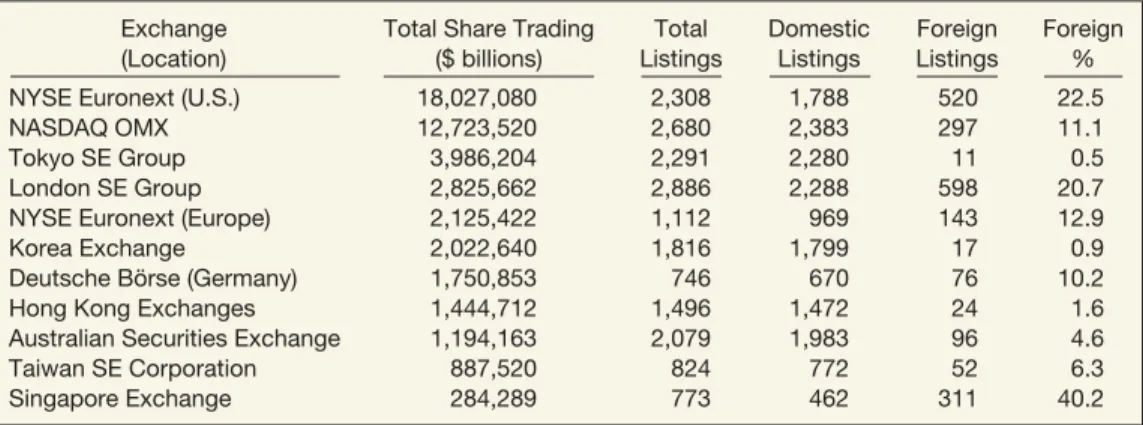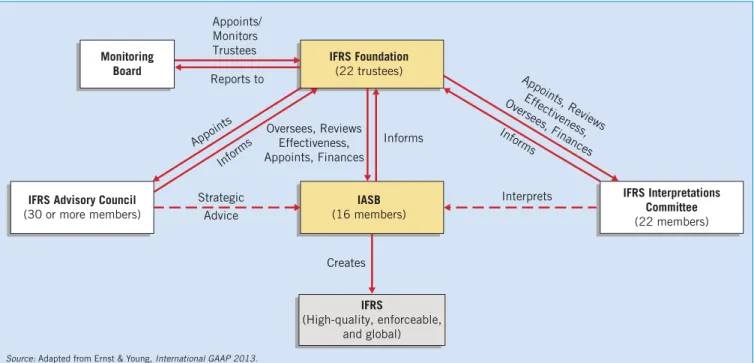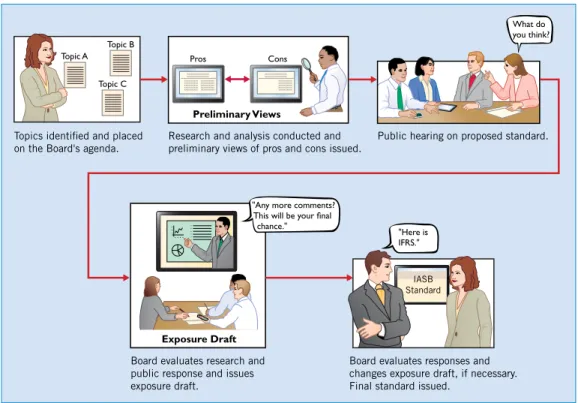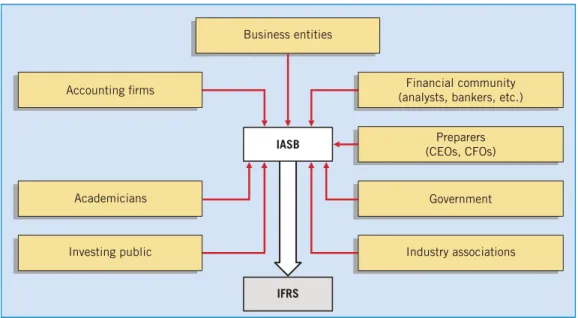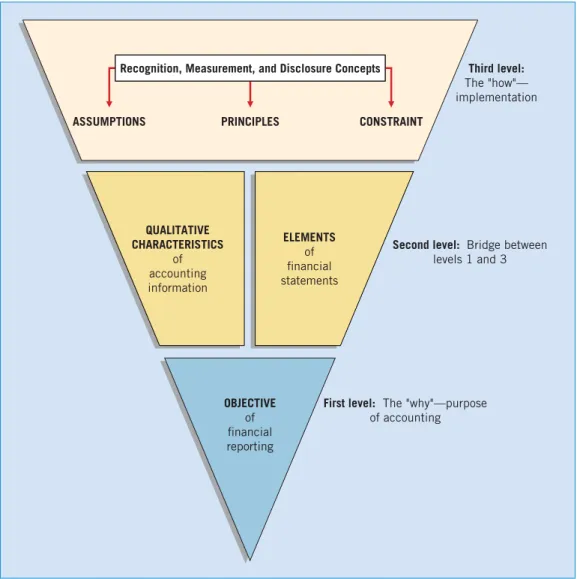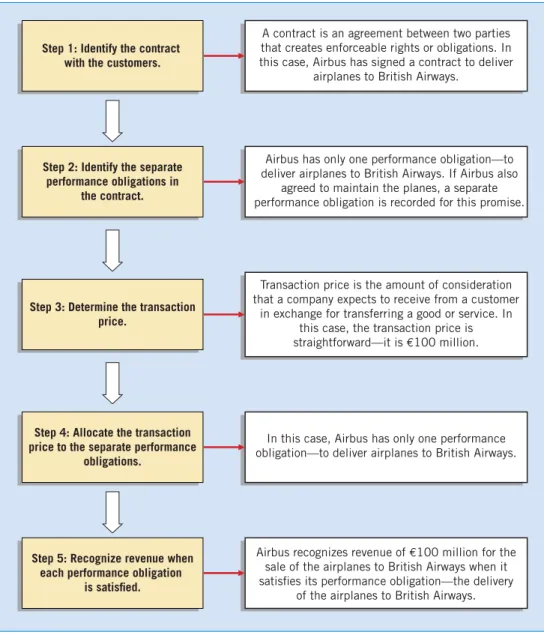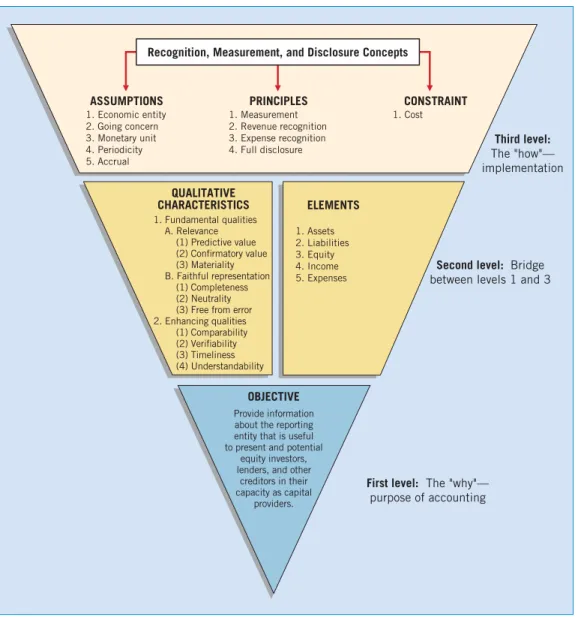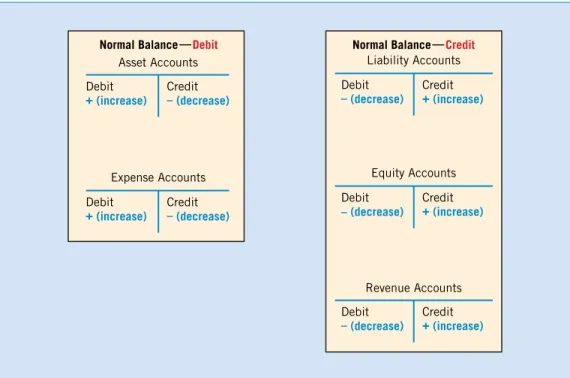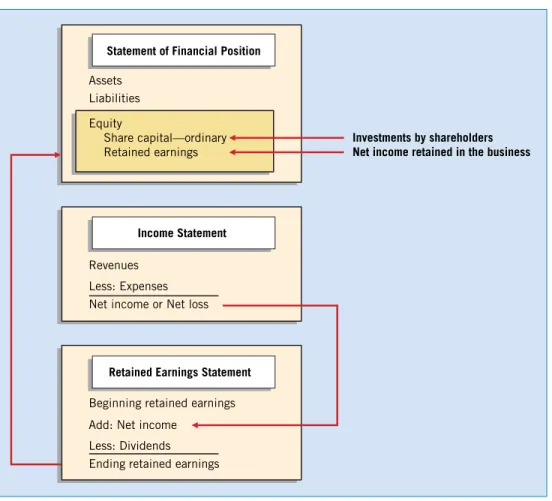www.wileyplus.com
WileyPLUS is a research-based, online environment for effective teaching and learning.
The market-leading homework experience in WileyPLUS offers:
A Blank Sheet of Paper Effect
The WileyPLUS homework experience, which includes type-ahead for account title entry, imitates a blank sheet of paper format so that students use recall memory when doing homework and will do better in class, on exams, and in their professions.
A Professional Worksheet Style
The professional, worksheet-style problem layouts help students master accounting skills while doing homework that directly applies to the classroom and the real world.
The Opportunity to Catch Mistakes Earlier
Multi-part problems further help students focus by providing feedback at the part-level.
Students can catch their mistakes earlier and access content-specific resources at the point of learning.
More Assessment Options
All brief exercises, exercises, and problems from the
textbook are now available for assignment in WileyPLUS in static or algorithmic format.
WileyPLUS includes a full ebook, interactive tutorials, assessment capabilities, and Blackboard integration.
page9.indd Page 9 26/05/14 3:41 PM f-392 ~/Desktop/26_05_14/WB01052/New%20File
WileyPLUS
Donald E. Kieso PhD, CPA
Northern Illinois University DeKalb, Illinois
Jerry J. Weygandt PhD, CPA
University of Wisconsin—Madison Madison, Wisconsin
Terry D. Warfield, PhD
University of Wisconsin—Madison
Madison, Wisconsin
our wives, Donna, Enid, and Mary, for their love,
support, and encouragement
Vice President & Executive Publisher George Hoffman
Executive Editor Joel Hollenbeck
Customer and Market Development Manager Christopher DeJohn
Project Editor Ed Brislin
Senior Development Editor Terry Ann Tatro
Development Editor Margaret Thompson
Editorial Operations Manager Yana Mermel
Senior Content Manager Dorothy Sinclair
Senior Production Editor Sandra Dumas
Associate Director of Marketing Amy Scholz
Senior Marketing Manager Karolina Zarychta Honsa Senior Product Designer Allie K. Morris
Product Designer Greg Chaput
Senior Designer Maureen Eide
Designer Kristine Carney
Creative Director Harry Nolan
Senior Photo Editor Mary Ann Price
Senior Editorial Assistant Tai Harriss
Marketing Assistant Mia Brady
Front Cover Photo Baris Simsek/E+/Getty Images
Back Cover Photo ©zhang bo/iStockphoto
Chapter Opener Photo ©Anthony Roman/Shutterstock
Cover Designer Maureen Eide
This book was set in Palatino LT Std by Aptara®, Inc. and printed and bound by Printplus Limited and Printed in China. The cover was printed by Printplus Limited and Printed in China.
Founded in 1807, John Wiley & Sons, Inc. has been a valued source of knowledge and understanding for more than 200 years, helping people around the world meet their needs and fulfill their aspirations.
Our company is built on a foundation of principles that include responsibility to the communities we serve and where we live and work. In 2008, we launched a Corporate Citizenship Initiative, a global effort to address the environmental, social, economic, and ethical challenges we face in our business. Among the issues we are addressing are carbon impact, paper specifications and procurement, ethical conduct within our business and among our vendors, and community and charitable support. For more information, please visit our website: www.wiley.com/go/citizenship.
Copyright © 2014 John Wiley & Sons, Inc. All rights reserved. No part of this publication may be reproduced, stored in a retrieval system or transmitted in any form or by any means, electronic, mechanical, photocopying, recording, scanning or otherwise, except as permitted under Sections 107 or 108 of the 1976 United States Copyright Act, without either the prior written permission of the Publisher, or authorization through payment of the appropriate per-copy fee to the Copyright Clearance Center, Inc., 222 Rosewood Drive, Danvers, MA 01923, website www.copyright.com. Requests to the Publisher for permission should be addressed to the Permissions Department, John Wiley & Sons, Inc., 111 River Street, Hoboken, NJ 07030-5774, (201)748-6011, fax (201)748-6008, website http://www.wiley.com/go/permissions.
To order books or for customer service, please call 1-800-CALL WILEY (225-5945).
ISBN-13 978-1-118-44396-5 Printed in the United States of America 10 9 8 7 6 5 4 3 2 1
1 Financial Reporting and Accounting Standards 2 2 Conceptual Framework for Financial Reporting 26 3 The Accounting Information System 64
4 Income Statement and Related Information 134 5 Statement of Financial Position and Statement of
Cash Flows 180
6 Accounting and the Time Value of Money 238 7 Cash and Receivables 294
8 Valuation of Inventories: A Cost-Basis Approach 356 9 Inventories: Additional Valuation Issues 398
10 Acquisition and Disposition of Property, Plant, and Equipment 442
11 Depreciation, Impairments, and Depletion 492 12 Intangible Assets 550
13 Current Liabilities, Provisions, and Contingencies 596 14 Non-Current Liabilities 652
15 Equity 702
16 Dilutive Securities and Earnings per Share 752 17 Investments 812
18 Revenue Recognition 882
19 Accounting for Income Taxes 954
20 Accounting for Pensions and Postretirement Benefits 1010
21 Accounting for Leases 1058
22 Accounting Changes and Error Analysis 1124 23 Statement of Cash Flows 1180
24 Presentation and Disclosure in Financial Reporting 1250
Appendices
A Specimen Financial Statements: Marks and Spencer Group plc A-1
B Specimen Financial Statements: adidas AG B-1 C Specimen Financial Statements: Puma SE C-1
Brief
Contents
iii
Jerry Weygandt
Jerry J. Weygandt, PhD, CPA, is Arthur Andersen Alumni Emeritus Professor of Accounting at the University of Wisconsin—Madison. He holds a Ph.D.
in accounting from the University of Illinois. Articles by Professor Weygandt have appeared in the Accounting Review, Journal of Accounting Research, Accounting Horizons, Journal of Accountancy, and other academic and professional journals. These articles have examined such financial reporting issues as accounting for price-level adjustments, pensions, convertible securities, stock option contracts, and interim reports. Professor Weygandt is author of other accounting and financial reporting books and is a member of the American Accounting Association, the American Institute of Certified Public Accountants, and the Wisconsin Society of Certified Public Accountants. He has served on numerous committees of the American Accounting Association and as a member of the editorial board of the Accounting Review; he also has served as President and Secretary-Treasurer of the American Accounting Association. In addition, he has been actively involved with the American Institute of Certified Public Accountants and has been a member of the Accounting Standards Executive Committee (AcSEC) of that organization. He has served on the FASB task force that examined the reporting issues related to accounting for income taxes and served as a trustee of the Financial Accounting Foundation.
Professor Weygandt has received the Chancellor’s Award for Excellence in Teaching and the Beta Gamma Sigma Dean’s Teaching Award. He is on the board of directors of M & I Bank of Southern Wisconsin. He is the recipient of the Wisconsin Institute of CPA’s Outstanding Educator’s Award and the Lifetime Achievement Award. In 2001, he received the American Accounting Association’s Outstanding Educator Award.
Terry Warfield
Terry D. Warfield, PhD, is the PwC Professor in Accounting at the University of Wisconsin—Madison. He received a B.S. and M.B.A. from Indiana University and a Ph.D. in accounting from the University of Iowa. Professor Warfield’s area of expertise is financial reporting, and prior to his academic career, he worked for five years in the banking industry. He served as the Academic Accounting Fellow in the Office of the Chief Accountant at the U.S. Securities and Exchange Commission in Washington, D.C. from 1995–1996. Professor Warfield’s primary research interests concern financial accounting standards and disclosure policies. He has published scholarly articles in The Accounting Review, Journal of Accounting and Economics, Research in Accounting Regulation, and Accounting Horizons, and he has served on the editorial boards of The Accounting Review, Accounting Horizons, and Issues in Accounting Education. He has served as president of the Financial Accounting and Reporting Section, the Financial Accounting Standards Committee of the American Accounting Association (Chair 1995–1996), and on the AAA-FASB Research Conference Committee. He also served on the Financial Accounting Standards Advisory Council of the Financial Accounting Standards Board.
He currently serves as a trustee on the Financial Accounting Foundation.
Professor Warfield has received teaching awards at both the University of Iowa and the University of Wisconsin, and he was named to the Teaching Academy at the University of Wisconsin in 1995. Professor Warfield has developed and published several case studies based on his research for use in accounting classes. These cases have been selected for the AICPA Professor-Practitioner Case Development Program and have been published in Issues in Accounting Education.
Don Kieso
Donald E. Kieso, PhD, CPA, received his bachelor’s degree from Aurora University and his doctorate in accounting from the University of Illinois. He has served as chairman of the Department of Accountancy and is currently the KPMG Emeritus Professor of Accountancy at Northern Illinois University. He has public accounting experience with Price Waterhouse & Co. (San Francisco and Chicago) and Arthur Andersen & Co.
(Chicago) and research experience with the Research Division of the American Institute of Certified Public Accountants (New York). He has done post-doctorate work as a Visiting Scholar at the University of California at Berkeley and is a recipient of NIU’s Teaching Excellence Award and four Golden Apple Teaching Awards.
Professor Kieso is the author of other accounting and business books and is a member of the American Accounting Association, the American Institute of Certified Public Accountants, and the Illinois CPA Society. He has served as a member of the Board of Directors of the Illinois CPA Society, then AACSB’s Accounting Accreditation Committees, the State of Illinois Comptroller’s Commission, as Secretary-Treasurer of the Federation of Schools of Accountancy, and as Secretary- Treasurer of the American Accounting Association. Professor Kieso is currently serving on the Board of Trustees and Executive Committee of Aurora University, as a member of the Board of Directors of Kishwaukee Community Hospital, and as Treasurer and Director of Valley West Community Hospital. From 1989 to 1993, he served as a charter member of the National Accounting Education Change Commission. He is the recipient of the Outstanding Accounting Educator Award from the Illinois CPA Society, the FSA’s Joseph A. Silvoso Award of Merit, the NIU Foundation’s Humanitarian Award for Service to Higher Education, a Distinguished Service Award from the Illinois CPA Society, and in 2003 an honorary doctorate from Aurora University.
Author
Commitment
v
Globalization is occurring rapidly. As economic and other interactions increase among countries, capital markets must provide high-quality financial information. A need therefore exists for high-quality financial reporting standards that meet this objective.
Fortunately, International Financial Reporting Standards (IFRS) has broad international acceptance, being used in some form by more than 115 countries around the world. One securities regulator noted that IFRS is best positioned to serve as the single set of high-quality accounting standards.
Change Is the Only Constant
Most countries want rapid action related to the acceptance of IFRS. A number of countries have already switched from their own version of accounting standards to IFRS. Students and instructors need educational materials related to IFRS in order to meet this new challenge.
Our objective in revising Intermediate Accounting, IFRS Edition, was therefore to continue to pro- vide the tools needed to understand what IFRS is and how it is applied in practice. The emphasis on fair value, the proper accounting for financial instruments, and the new developments related to leasing, revenue recognition, and financial statement presentation are examined in light of current practice. In addition, given the rapid changes taking place, we provide and discuss the new Conceptual Framework to understand how these issues will likely be resolved in the future.
A Look at Global Accounting
While IFRS has achieved broad acceptance, not all countries have adopted it. For example, U.S. companies still follow U.S. generally accepted accounting principles (U.S. GAAP) in preparing their financial statements. In fact, the differences between IFRS and U.S. GAAP may
provide certain companies with a competitive advantage, so understanding these differences may be important in analyzing company performance. In addition, the IASB and the FASB are working together to converge their standards as appropriate. Accordingly, we have included a Global Accounting Insights section at the end of selected chapters, to highlight the important differences that remain between IFRS and U.S. GAAP, as well as the ongoing joint convergence efforts to resolve them. As a result, students truly gain a global accounting education by studying this textbook.
Intermediate Accounting Works
Intermediate Accounting, Fifteenth Edition (based on U.S. GAAP) is the market-leading textbook in providing the tools needed to understand what U.S. GAAP is and how it is applied in practice. With this IFRS Second Edition, we strive to continue to provide the material needed to understand this subject area using IFRS. The book is comprehensive and up-to-date, and provides the instructor with flexibility in the topics to cover. We also include proven pedagogical tools, designed to help students learn more effectively and to answer the changing needs of this course.
We are excited about Intermediate Accounting, IFRS Second Edition. We believe it meets an important objective of providing useful information to educators and students interested in learning about IFRS. Suggestions and comments from users of this textbook will be appreciated. Please feel free to e-mail any one of us at [email protected].
Donald E. Kieso Jerry J. Weygandt Terry D. Warfield Somonauk, Illinois Madison, Wisconsin Madison, Wisconsin
“If this textbook helps you appreciate the challenges, worth, and limitations of financial reporting, if it encourages you to evaluate critically and understand financial accounting concepts and practice, and if it prepares you for advanced study, professional examinations, and the successful and ethical pursuit of your career in accounting or business in a global economy, then we will have attained our objectives.”
From the
Authors
vi
The Second Edition expands our emphasis on student learning and improves upon a teaching and learning pack- age that instructors and students have rated the highest in customer satisfaction. We have developed a number of new pedagogical features and content changes, designed both to help students learn more effectively and to answer the changing needs of the course.
Evolving Issues
As we continue to strive to reflect the constant changes in the accounting environment, we have added a new feature to the Second Edition, Evolving Issue boxes, which highlight and discuss areas in which the profession may be encountering controversy or nearing resolution. Our hope is that these high-interest boxes will increase student engagement, as well as serve as classroom discussion points. For another source of high-interest material, see the What Do the Numbers Mean? boxes, most of which are new to this edition.
Global Accounting Insights
We have updated the end-of-chapter section, Global Accounting Insights (previously known as the Convergence Corner), throughout the textbook. In addition, we now present Similarities as well as Differences between U.S.
GAAP and IFRS to increase student understanding.
Major Content Revisions
In response to the changing environment, we have significantly revised several chapters.
Chapter 2 Conceptual Framework for Financial Reporting
• Updated discussion on the IASB’s guidance related to the use of fair value in financial statements, including the establishment of the fair value hierarchy.
• New illustration on the five steps of revenue recognition.
• Revised Constraints section, as now only cost constraint is included in the Conceptual Framework.
Chapter 4 Income Statement and Related Information
• New sections on the one statement and two statement formats for reporting components of other compre- hensive income.
• Rewrote the Allocating to Non-Controlling Interest section to increase student understanding.
Chapter 18 Revenue Recognition
• Completely new chapter reflecting the very recent IFRS on revenue recognition.
• Numerous new illustrations providing case examples for correctly applying the new IFRS on revenue recognition.
Chapter 20 Accounting for Pensions and Postretirement Benefits
• New sections on the net defined benefit obligations and how to report changes for it.
• Updated section on past service cost, including discussion of curtailments.
Chapter 23 Statement of Cash Flows
• Reorganized chapter, to present the indirect method through preparation of the statement of cash flows first, followed by the discussion of the direct method as well as the advantages and disadvantages of both methods.
• New Evolving Issue, “Direct versus Indirect Controversy,” on the arguments in favor of each method.
See the next two pages for a complete list of content revisions by chapter.
Supplementary Materials
The Solutions Manual, Test Bank, PowerPoint, Instructor’s Manual, and all other materials were updated to reflect changes in the Second Edition. Instructor resources and additional student resources, such as online self-tests, are available at www.wiley.com/college/kieso. Supplementary materials are also available in WileyPLUS where additional resources can help instructors create assignments and track student progress. Additional Course Management Resources are available.
What’s New?
Chapter 1 Financial Accounting and Accounting Standards • Revised opening story, to include more recent commen-
taries on IFRS.
• New WDNM box, on recent progress toward global adop- tion of IFRS.
• Updated and expanded discussion of the IASB’s standard- setting structure.
• Revised International Convergence section, to include recent developments.
• Moved Appendix 1A, The U.S. Standard-Setting Environment, to book’s companion website.
Chapter 2 Conceptual Framework for Financial Reporting • Updated Conceptual Framework discussion to reflect
recent IASB discussion paper, e.g., materiality no longer considered a separate constraint.
• Updated discussion on fair value, including the establish- ment of the fair value hierarchy, and the revenue recogni- tion principle.
• New WDNM boxes, on the importance of faithful rep- resentation, as exemplified by the scandal at Olympus Corp., and the concept of prudence.
• Updated discussion plus added an illustration on the five steps of revenue recognition.
• Updated Constraints section as now only cost constraint is included in the Conceptual Framework.
Chapter 3 The Accounting Information System
• New opening story on impact of global economic crime.
• Enhanced Adjusting Entries section, to provide additional explanation and visuals to students.
• New WDNM box, on companies’ need to update their accounting information systems yet unwillingness to inter- rupt their operations to do so.
Chapter 4 Income Statement and Related Information • Updated opening story, to discuss recent IASB project on
financial statement presentation.
• New sections on the one statement and two statement formats for reporting components of other comprehensive income.
• Rewrote Allocation to Non-Controlling Interest section, to increase student understanding.
• New WDNM boxes, on a recent study that reinforces con- cerns about earnings management and the use of pro forma earnings measures.
• New Evolving Issue on income reporting.
Chapter 5 Statement of Financial Position and Statement of Cash Flows
• New WDNM box, on presentation order of assets on the statement of financial position.
• New Evolving Issue, on statement of financial position reporting.
• Moved M&S’s financial statements from Appendix 5B to Appendix A at end of textbook.
Chapter 6 Accounting and the Time Value of Money • New opening story, about developing fair value estimates
and applying fair value guidance to specific examples.
Chapter 7 Cash and Receivables
• Revised opening story, about banks’ bad debt allowances.
• New WDNM box, on consequences of requiring compa- nies to value their securities at fair value.
• New Evolving Issue, on the three-bucket approach of clas- sifying loans and impairment stages.
Chapter 8 Valuation of Inventories: A Cost-Basis Approach • New opening story, about the difficulties in determining
the point at which inventory is considered to be sold.
• Moved Appendix 8B (Special Issues Related to LIFO) and related assignment material to book’s companion website.
• Deleted material on sales on installment in Special Sales Agreements section.
Chapter 9 Inventories: Additional Valuation Issues
• New opening story, about why investors need comparable information about inventory when evaluating retailers’
financial statements.
Chapter 10 Acquisition and Disposition of Property, Plant, and Equipment
• New opening story, about importance of capital expendi- tures and how they can affect a company’s income.
Chapter 11 Depreciation, Impairments, and Depletion • New WDNM box, on why some companies do not use
revaluation accounting.
Chapter 12 Intangible Assets
• New opening story, on increasing amount of sustainable information provided by companies.
• New Underlying Concepts note about surrounding contro- versy for R&D accounting.
• New WDNM boxes: (1) how companies protect their intangible assets, (2) the patent battles between e-tailers and cell phone companies, and (3) global R&D incentives.
• New Evolving Issue, on the recognition of R&D and inter- nally generated intangibles.
Chapter 13 Current Liabilities, Provisions, and Contingencies • Revised Unearned Revenues section, to correspond to
recent revenue recognition standard.
• New section on value-added tax (VAT).
• New sections on assurance-type and service-type warranties.
• New Evolving Issue, on how to account for greenhouse gases.
Content Changes
by Chapter
on governments and companies.
• New WDNM box, on why companies issue 100-year bonds.
• Updated Fair Value Option section, on how to treat changes in liability value due to credit risk changes.
• New footnote on IASB consolidation guidance for whether an off-balance-sheet entity should be on-balance-sheet.
Chapter 15 Equity
• Updated opening story, on the global IPO market.
• New WDNM boxes, on whether buybacks signal good or bad news about companies, and an analysis of recent company dividend payouts.
• Significantly enhanced Share Dividends and Share Splits sections to reflect recent information and pronouncements.
Chapter 16 Dilutive Securities and Earnings per Share • Updated WDNM box on convertible bonds, to include
more recent offerings from Asian companies.
• New illustration on company equity grants.
Chapter 17 Investments
• Revised WDNM box on fair value, to discuss controversial valuation of Greek government bond holdings.
• New illustration to clarify how to determine the adjust- ment to the carrying value of an investment.
• New Evolving Issue, on fair value controversy.
• New Appendix 17B on required fair value disclosures;
deleted discussion of reclassification adjustments (old Appendix 17A).
Chapter 18 Revenue Recognition
• Completely rewritten chapter to reflect recently issued revenue recognition standard, including an overview and discussion of the five-step process.
• New opening story, featuring Rolls-Royce, Qwest Communications, Sinovel Wind Group, and iGo, to demonstrate challenges of recognizing revenue properly.
• New Evolving Issue, on the implementation of the recently issued revenue recognition standard.
Chapter 19 Accounting for Income Taxes
• Updated opening story, to include the most recent tax system recommendations by the G20.
• Updated footnotes on determining true cost of taxes and deferred tax assets (Sony’s experience in post-quake Japan).
• Expanded discussion of the components of income tax expense on the income statement.
• New WDNM box, on how a reduction in tax rates can be a double-edged sword for companies that have large deferred tax asset balances.
Chapter 20 Accounting for Pensions and Postretirement Benefits
• Chapter has been significantly revised to reflect recent IASB standards. Details are given below.
• Updated opening story, to include recent information about swings in pension plans’ status.
ferences between countries in which plans are offered.
• New section on Net Defined Benefit Obligation (Asset).
• Rewrote Components of Pension Expense as new section, Reporting Changes in the Defined Benefit Obligation (Asset) to reflect recent IFRS.
• Expanded and updated section on Past Service Cost to reflect recent IASB rulings, including discussion of curtailments.
• New section on Remeasurements, replacing outdated discussion of corridor amortization.
Chapter 21 Accounting for Leases
• Updated opening story on aircraft leasing data and added information about IASB’s work on new lease standard.
• New Evolving Issue, on proposal to address off-balance-sheet reporting of leases.
Chapter 22 Accounting Changes and Error Analysis • New WDNM box, on how accounting changes create
comparability challenges.
• Revised WDNM box, on need to protect company statements from negative effects of fraud.
• Reformatted examples of counterbalancing and non- counterbalancing errors as illustrations, for improved student understanding.
Chapter 23 Statement of Cash Flows
• Reorganized chapter, to present indirect method through preparation of the statement of cash flows first, followed by discussion of the direct method and advantages and disadvantages of both methods.
• New WDNM box, on COROA (cash operating return on assets), a new measure of profitability.
• Reformatted “Direct versus Indirect Controversy” as new Evolving Issue box, to highlight the arguments in favor of each method.
• New Underlying Concepts, on how statement of cash flows information and disclosures relate to the objective of financial reporting and the full disclosure principle.
Chapter 24 Presentation and Disclosure in Financial Reporting • New opening story, about IASB survey of criticisms of
current financial statement disclosures and how the Board plans to respond.
• New WDNM boxes: (1) requirements for disclosing collat- eral arrangements in repurchase agreements, (2) how note disclosure requirements can positively affect securities markets, and (3) differences in British forecasted information.
• New Evolving Issue, on anticipated increase in note disclo- sure requirements as IFRS and U.S. GAAP converge.
• New graphs on types and trends of economic crime and fraud.
Appendices A-C (New!)
Financial statements for Marks & Spencer, adidas, and Puma.
viii
ix
Chapter 1
Financial Reporting and Accounting Standards 2
Revolution in International Financial Reporting Global Markets 4
Financial Statements and Financial Reporting 5 Accounting and Capital Allocation 5
High-Quality Standards 6 Objective of Financial Reporting 7
General-Purpose Financial Statements 7 Equity Investors and Creditors 7
What Do the Numbers Mean? Don’t Forget Stewardship 7
Entity Perspective 7 Decision-Usefulness 8
Standard-Setting Organizations 8
International Organization of Securities Commissions (IOSCO) 9
What Do the Numbers Mean? How Is It Going? 9 International Accounting Standards Board (IASB) 10 Hierarchy of IFRS 13
Financial Reporting Challenges 13 IFRS in a Political Environment 13 What Do the Numbers Mean? Fair
Consequences? 14 The Expectations Gap 15
Significant Financial Reporting Issues 15
Ethics in the Environment of Financial Accounting 16 International Convergence 16
Conclusion 17
Global Accounting Insights 17 Authoritative Literature 19
Chapter 2
Conceptual Framework for Financial Reporting 26
What Is It?
Conceptual Framework 28
Need for a Conceptual Framework 28 What Do the Numbers Mean? What’s
Your Principle? 29
Development of a Conceptual Framework 29 Overview of the Conceptual Framework 30
First Level: Basic Objective 30
Second Level: Fundamental Concepts 31 Qualitative Characteristics of Accounting
Information 31
What Do the Numbers Mean? Unfaithful—
For 20 Years 35 Basic Elements 37
Third Level: Recognition, Measurement, and Disclosure Concepts 38
Basic Assumptions 38
Basic Principles of Accounting 40 Cost Constraint 45
What Do the Numbers Mean? Let’s Be Prudent 46
Summary of the Structure 46 Global Accounting Insights 47 Authoritative Literature 50
Chapter 3
The Accounting Information System 64
Needed: A Reliable Information System Accounting Information System 66
Basic Terminology 66 Debits and Credits 67 The Accounting Equation 68
Financial Statements and Ownership Structure 70
The Accounting Cycle 71
Identifying and Recording Transactions and Other Events 72
Journalizing 73 Posting 74 Trial Balance 77
What Do the Numbers Mean? Change Management 78
Adjusting Entries 79 Adjusted Trial Balance 90
Preparing Financial Statements 90 What Do the Numbers Mean?
24/7 Accounting 91 Closing 92
Post-Closing Trial Balance 93
Reversing Entries—An Optional Step 95
Contents
x
Complicated 95
The Accounting Cycle Summarized 95 Financial Statements for a Merchandising
Company 96
Income Statement 96
Retained Earnings Statement 97 Statement of Financial Position 97 Closing Entries 98
Global Accounting Insights 99
APPENDIX 3A Cash-Basis Accounting versus Accrual-Basis Accounting 101
Conversion from Cash Basis to Accrual Basis 103
Service Revenue Computation 103 Operating Expense Computation 104 Theoretical Weaknesses of the Cash Basis 105 APPENDIX 3B Using Reversing Entries 106 Illustration of Reversing Entries—Accruals 106 Illustration of Reversing Entries—Deferrals 107 Summary of Reversing Entries 108
APPENDIX 3C Using a Worksheet: The Accounting Cycle Revisited 109
Worksheet Columns 109 Trial Balance Columns 109 Adjustments Columns 109
Adjustments Entered on the Worksheet 109 Adjusted Trial Balance 111
Income Statement and Statement of Financial Position Columns 111
Preparing Financial Statements from a Worksheet 112
Chapter 4
Income Statement and Related Information 134
Financial Statements Are Changing Income Statement 136
Usefulness of the Income Statement 136 Limitations of the Income Statement 136 Quality of Earnings 137
What Do the Numbers Mean? Four: The Loneliest Number 138
Format of the Income Statement 138 Elements of the Income Statement 138 Intermediate Components of the
Income Statement 139 Illustration 140
Condensed Income Statements 140 What Do the Numbers Mean? You May
Need a Map 142
Reporting Within the Income Statement 143 Gross Profit 143
Income from Operations 143
Charges Bugging You? 146 Income before Income Tax 146 Net Income 147
Allocating to Non-Controlling Interest 147 Earnings per Share 148
Discontinued Operations 148 Intraperiod Tax Allocation 150 Summary 151
What Do the Numbers Mean? Different Income Concepts 152
Other Reporting Issues 153
Accounting Changes and Errors 153 Retained Earnings Statement 155 Comprehensive Income 156
Evolving Issue Income Reporting 158 Statement of Changes in Equity 158 Global Accounting Insights 159 Authoritative Literature 162
Chapter 5
Statement of Financial Position and Statement of Cash Flows 180
Hey, It Doesn’t Balance!
Statement of Financial Position 182 Usefulness of the Statement of Financial
Position 182
Limitations of the Statement of Financial Position 182
Classification in the Statement of Financial Position 183
What Do the Numbers Mean? What Comes First? 184
Statement of Financial Position Format 194 What Do the Numbers Mean? Warning
Signals 196
Statement of Cash Flows 196
Purpose of the Statement of Cash Flows 196 What Do the Numbers Mean? Watch That
Cash Flow 197
Content and Format of the Statement of Cash Flows 197
Overview of the Preparation of the Statement of Cash Flows 198
Usefulness of the Statement of Cash Flows 201 Additional Information 204
Notes to the Financial Statements 204 Techniques of Disclosure 207
Other Guidelines 208
Evolving Issue Statement of Financial Position Reporting: Gross or Net? 209
Global Accounting Insights 210
APPENDIX 5A Ratio Analysis—A Reference 213 Using Ratios to Analyze Performance 213 Authoritative Literature 215
xi
Chapter 6
Accounting and the Time Value of Money 238
How Do I Measure That?
Basic Time Value Concepts 240
Applications of Time Value Concepts 240 The Nature of Interest 241
Simple Interest 242 Compound Interest 242
What Do the Numbers Mean? A Pretty Good Start 243
Fundamental Variables 246 Single-Sum Problems 246
Future Value of a Single Sum 247 Present Value of a Single Sum 248 Solving for Other Unknowns in
Single-Sum Problems 250 Annuities 251
Future Value of an Ordinary Annuity 252 Future Value of an Annuity Due 254 Examples of Future Value of Annuity
Problems 255
Present Value of an Ordinary Annuity 257 What Do the Numbers Mean? Up in Smoke 259 Present Value of an Annuity Due 259
Examples of Present Value of Annuity Problems 260 More Complex Situations 262
Deferred Annuities 262
Valuation of Long-Term Bonds 264 Effective-Interest Method of Amortization
of Bond Discount or Premium 265 Present Value Measurement 266
Choosing an Appropriate Interest Rate 267 Example of Expected Cash Flow 267 Authoritative Literature 270
Chapter 7
Cash and Receivables 294
No-Tell Nortel Cash 296
What Is Cash? 296 Reporting Cash 296
Summary of Cash-Related Items 298
What Do the Numbers Mean? Deep Pockets 299 Accounts Receivable 299
Recognition of Accounts Receivable 300 Valuation of Accounts Receivable 302 Impairment Evaluation Process 307 Notes Receivable 308
Recognition of Notes Receivable 308 Valuation of Notes Receivable 312 What Do the Numbers Mean? Economic
Consequences and Write-Offs 313 Special Issues Related to Receivables 314
Fair Value Option 314
Derecognition of Receivables 315 Evolving Issue A Cure for “Too Little,
Too Late”? 319
Presentation and Analysis 320 Global Accounting Insights 322 APPENDIX 7A Cash Controls 325 Using Bank Accounts 325
The Imprest Petty Cash System 326 Physical Protection of Cash Balances 327 Reconciliation of Bank Balances 327
APPENDIX 7B Impairments of Receivables 330 Impairment Measurement and Reporting 330
Impairment Loss Example 331 Recording Impairment Losses 331 Recovery of Impairment Loss 332 Authoritative Literature 332
Chapter 8
Valuation of Inventories:
A Cost-Basis Approach 356
It Should Be Easy, but It Isn’t!
Inventory Issues 358 Classification 358 Inventory Cost Flow 359 Inventory Control 361
Basic Issues in Inventory Valuation 362 Physical Goods Included in Inventory 362
Goods in Transit 363 Consigned Goods 363
Special Sales Agreements 364
What Do the Numbers Mean? No Parking! 365 Effect of Inventory Errors 365
Costs Included in Inventory 367 Product Costs 367
Period Costs 368
Treatment of Purchase Discounts 368 Which Cost Flow Assumption to Adopt? 369
Specific Identification 370 Average-Cost 371
First-In, First-Out (FIFO) 372
Inventory Valuation Methods—Summary Analysis 373
APPENDIX 8A LIFO Cost Flow Assumption 375 Last-In, First-Out (LIFO) 376
Inventory Valuation Methods—Summary Analysis 377 Authoritative Literature 378
Chapter 9
Inventories: Additional Valuation Issues 398
Not What It Seems to Be
Lower-of-Cost-or-Net Realizable Value (LCNRV) 400 Net Realizable Value 400
Illustration of LCNRV 400
xii
Recording Net Realizable Value Instead of Cost 402
Use of an Allowance 403 Recovery of Inventory Loss 403 Evaluation of the LCNRV Rule 404 Valuation Bases 404
Special Valuation Situations 404 Valuation Using Relative Standalone
Sales Value 407
Purchase Commitments—A Special Problem 408 The Gross Profit Method of Estimating
Inventory 409
Computation of Gross Profit Percentage 410 Evaluation of Gross Profit Method 412
What Do the Numbers Mean? The Squeeze 412 Retail Inventory Method 413
Retail-Method Concepts 414
Retail Inventory Method with Markups and Markdowns—Conventional Method 414 Special Items Relating to Retail Method 417 Evaluation of Retail Inventory Method 418 Presentation and Analysis 418
Presentation of Inventories 418 Analysis of Inventories 420 Global Accounting Insights 421 Authoritative Literature 423
Chapter 10
Acquisition and Disposition of Property, Plant, and Equipment 442
Watch Your Spending
Property, Plant, and Equipment 444
Acquisition of Property, Plant, and Equipment 444 Cost of Land 445
Cost of Buildings 446 Cost of Equipment 446 Self-Constructed Assets 446
Interest Costs During Construction 447 Observations 453
What Do the Numbers Mean? What’s in Your Interest? 453
Valuation of Property, Plant, and Equipment 453 Cash Discounts 453
Deferred-Payment Contracts 453 Lump-Sum Purchases 454 Issuance of Shares 455
Exchanges of Non-Monetary Assets 456 Government Grants 459
Costs Subsequent to Acquisition 463 Additions 463
What Do the Numbers Mean?
Disconnected 464
Improvements and Replacements 464 Rearrangement and Reorganization 465 Repairs 465
to Acquisition 466
Disposition of Property, Plant, and Equipment 466 Sale of Plant Assets 467
Involuntary Conversion 467 Authoritative Literature 469
Chapter 11
Depreciation, Impairments, and Depletion 492
Here Come the Write-Offs
Depreciation—A Method of Cost Allocation 494 Factors Involved in the Depreciation Process 494 Methods of Depreciation 495
Component Depreciation 499 Special Depreciation Issues 500
What Do the Numbers Mean? Depreciation Choices 503
Impairments 503
Recognizing Impairments 503 Impairment Illustrations 505 Reversal of Impairment Loss 506 Cash-Generating Units 507
Impairment of Assets to Be Disposed Of 507 Depletion 508
Establishing a Depletion Base 508 Write-Off of Resource Cost 510 Estimating Recoverable Reserves 511 Liquidating Dividends 511
Presentation on the Financial Statements 512 Revaluations 513
Recognizing Revaluations 513 Revaluation Issues 514
What Do the Numbers Mean? To Revalue or Not 515
Presentation and Analysis 515
Presentation of Property, Plant, Equipment, and Mineral Resources 515
Analysis of Property, Plant, and Equipment 517 Global Accounting Insights 519
APPENDIX 11A Revaluation of Property, Plant, and Equipment 522
Revaluation of Land 522
Revaluation—2015: Valuation Increase 522 Revaluation—2016: Decrease below
Historical Cost 523 Revaluation—2017: Recovery
of Impairment Loss 523
Revaluation of Depreciable Assets 524 Revaluation—2015: Valuation Increase 524 Revaluation—2016: Decrease below
Historical Cost 525 Revaluation—2017: Recovery
of Impairment Loss 527 Authoritative Literature 529
xiii
Chapter 12
Intangible Assets 550
Is This Sustainable?
Intangible Asset Issues 552 Characteristics 552 Valuation 552
Amortization of Intangibles 553 Types of Intangible Assets 555
Marketing-Related Intangible Assets 555
What Do the Numbers Mean? Keep Your Hands Off My Intangible! 556
Customer-Related Intangible Assets 556 Artistic-Related Intangible Assets 557 Contract-Related Intangible Assets 558 Technology-Related Intangible Assets 558 What Do the Numbers Mean? Patents—
Strategic Lifeblood 560 Goodwill 561
Impairment of Intangible Assets 564
Impairment of Limited-Life Intangibles 565 Reversal of Impairment Loss 565
Impairment of Indefinite-Life Intangibles Other Than Goodwill 566
Impairment of Goodwill 567
Research and Development Costs 568 What Do the Numbers Mean? Global
R&D Incentives 569
Identifying R&D Activities 569 Accounting for R&D Activities 570
Evolving Issue Recognition of R&D and Internally Generated Intangibles 571
Costs Similar to R&D Costs 572
What Do the Numbers Mean? Branded 573 Presentation of Intangibles and Related Items 574
Presentation of Intangible Assets 574 Presentation of Research and Development
Costs 575
Global Accounting Insights 576 Authoritative Literature 579
Chapter 13
Current Liabilities, Provisions, and Contingencies 596
Now You See It, Now You Don’t Current Liabilities 598
Accounts Payable 599 Notes Payable 599
Current Maturities of Long-Term Debt 601 Short-Term Obligations Expected
to Be Refinanced 601
What Do the Numbers Mean? Going, Going, Gone 602
Dividends Payable 603
Customer Advances and Deposits 603 Unearned Revenues 604
Sales and Value-Added Taxes Payable 605 Employee-Related Liabilities 607
Provisions 610
Recognition of a Provision 611 Measurement of Provisions 612 Common Types of Provisions 613
What Do the Numbers Mean? Frequent Flyers 618 Disclosures Related to Provisions 622
Contingencies 623
Contingent Liabilities 623 Contingent Assets 625 Presentation and Analysis 625
Presentation of Current Liabilities 625 Analysis of Current Liabilities 626
Evolving Issue Greenhouse Gases: Let’s Be Standard-Setters 627
Authoritative Literature 629
Chapter 14
Non-Current Liabilities 652
Going Long
Bonds Payable 654 Issuing Bonds 654
Types and Ratings of Bonds 654 What Do the Numbers Mean?
All About Bonds 655
Valuation of Bonds Payable 656
What Do the Numbers Mean? How about a 100-Year Bond? 658
Effective-Interest Method 659
What Do the Numbers Mean? Your Debt Is Killing My Equity 664
Long-Term Notes Payable 665 Notes Issued at Face Value 665 Notes Not Issued at Face Value 665 Special Notes Payable Situations 668 Mortgage Notes Payable 670
Special Issues Related to Non-Current Liabilities 671 Extinguishment of Non-Current Liabilities 671 Fair Value Option 675
Off-Balance-Sheet Financing 677
Evolving Issue Off-and-On Reporting 679 Presentation and Analysis 679
Global Accounting Issues 681 Authoritative Literature 684
Chapter 15
Equity 702
It’s a Global Market
The Corporate Form of Organization 704 Corporate Law 704
Share System 704
Variety of Ownership Interests 705 What Do the Numbers Mean? A Class (B)
Act 705
xiv
Issuance of Shares 707 Reacquisition of Shares 711
What Do the Numbers Mean? Signals to Buy? 712 What Do the Numbers Mean? Buyback
Volatility 715 Preference Shares 715
Features of Preference Shares 716 Accounting for and Reporting
of Preference Shares 717 Dividend Policy 717
Financial Condition and Dividend Distributions 718 Types of Dividends 719
Share Dividends and Share Splits 721 What Do the Numbers Mean? Dividends Up,
Dividends Down 724
Disclosure of Restrictions on Retained Earnings 725
Presentation and Analysis of Equity 726 Presentation of Equity 726
Analysis 727
Global Accounting Insights 729
APPENDIX 15A Dividend Preferences and Book Value per Share 732
Dividend Preferences 732 Book Value per Share 733 Authoritative Literature 735
Chapter 16
Dilutive Securities and Earnings per Share 752
Kicking the Habit
Dilutive Securities and Compensation Plans 754 Debt and Equity 754
Convertible Debt 754
Convertible Preference Shares 759
What Do the Numbers Mean? How Low Can You Go? 760
Share Warrants 760
Accounting for Share Compensation 764 Debate over Share-Option Accounting 770 Computing Earnings per Share 770
Earnings per Share—Simple Capital Structure 771 Earnings per Share—Complex Capital
Structure 775
Global Accounting Insights 783
APPENDIX 16A Accounting for Share-Appreciation Rights 785
SARS—Share-Based Equity Awards 786 SARS—Share-Based Liability Awards 786 Share-Appreciation Rights Example 787 APPENDIX 16B Comprehensive Earnings
per Share Example 788 Diluted Earnings per Share 790 Authoritative Literature 794
Investments 812
What to Do?
Accounting for Financial Assets 814 Measurement Basis—A Closer Look 814 Debt Investments 815
Debt Investments—Amortized Cost 815 Debt Investments—Fair Value 818 What Do the Numbers Mean? What Is
Fair Value? 820 Fair Value Option 823
Summary of Debt Investment Accounting 823 Equity Investments 824
Holdings of Less Than 20% 825 Holdings Between 20% and 50% 829 Holdings of More Than 50% 831 What Do the Numbers Mean? Who’s in
Control Here? 832 Other Reporting Issues 832
Impairment of Value 832
Transfers Between Categories 834
Evolving Issue Fair Value Controversy 834 Summary of Reporting Treatment
of Investments 835
Global Accounting Insights 836
APPENDIX 17A Accounting for Derivative Instruments 838
Defining Derivatives 838
Who Uses Derivatives, and Why? 839 Producers and Consumers 839 Speculators and Arbitrageurs 840 Basic Principles in Accounting for
Derivatives 841
Derivative Financial Instrument (Speculation) 841
Differences Between Traditional and Derivative Financial Instruments 844
Derivatives Used for Hedging 844 What Do the Numbers Mean? Risky
Business 845 Fair Value Hedge 845 Cash Flow Hedge 848 Other Reporting Issues 850
Embedded Derivatives 850 Qualifying Hedge Criteria 850
Summary of Derivatives Accounting 851 Comprehensive Hedge Accounting Example 852
Fair Value Hedge 853
Financial Statement Presentation of an Interest Rate Swap 854
Controversy and Concluding Remarks 855 APPENDIX 17B Fair Value Disclosures 857 Disclosure of Fair Value Information: Financial
Instruments 857
Disclosure of Fair Values: Impaired Assets or Liabilities 860
xv Conclusion 860
Authoritative Literature 861
Chapter 18
Revenue Recognition 882
It’s Back
Overview of Revenue Recognition 884 Background 884
New Revenue Recognition Standard 885 The Five-Step Process 885
Identifying the Contract with Customers—
Step 1 886
Identifying Separate Performance Obligations—
Step 2 889
Determining the Transaction Price—Step 3 890 Allocating the Transaction Price to Separate
Performance Obligations—Step 4 894 Recognizing Revenue When (or as)
Each Performance Obligation Is Satisfied—Step 5 897
Summary 898
Other Revenue Recognition Issues 899 Right of Return 899
Repurchase Agreements 901
What Do the Numbers Mean? No Take-Backs 902 Bill-and-Hold Arrangements 902
Principal-Agent Relationships 903
What Do the Numbers Mean? Grossed Out 904 Consignments 904
Warranties 906
Non-Refundable Upfront Fees 907 Summary 907
Presentation and Disclosure 908 Presentation 908
Disclosure 911
Evolving Issue Ch, Ch, Ch Changes in Revenue Recognition 912 APPENDIX 18A Long-Term Construction
Contracts 913
Revenue Recognition over Time 913 Percentage-of-Completion Method 915 Cost-Recovery (Zero-Profit) Method 920 Long-Term Contract Losses 921
APPENDIX 18B Revenue Recognition for Franchises 925
Franchise Accounting 926
Recognition of Franchise Rights Revenue over Time 928
Authoritative Literature 930
Chapter 19
Accounting for Income Taxes 954
Safe (Tax) Haven?
Fundamentals of Accounting for Income Taxes 956 Future Taxable Amounts and Deferred Taxes 957
What Do the Numbers Mean?
“Real Liabilities” 960
Future Deductible Amounts and Deferred Taxes 961
What Do the Numbers Mean?
“Real Assets” 963
Deferred Tax Asset (Non-Recognition) 963 Income Statement Presentation 964 Specific Differences 965
Tax Rate Considerations 968
What Do the Numbers Mean? Global Tax Rates 969
Accounting for Net Operating Losses 970 Loss Carryback 970
Loss Carryforward 970 Loss Carryback Example 971 Loss Carryforward Example 971 Financial Statement Presentation 975
Statement of Financial Position 975 Income Statement 976
Tax Reconciliation 978
What Do the Numbers Mean? The Tax Twist 979
Review of the Asset-Liability Method 980 Global Accounting Insights 982
APPENDIX 19A Comprehensive Example of Interperiod Tax Allocation 985
First Year—2014 985
Taxable Income and Income Taxes Payable—2014 986
Computing Deferred Income Taxes—End of 2014 986
Deferred Tax Expense (Benefit) and the Journal Entry to Record Income Taxes—2014 987 Financial Statement Presentation—2014 988 Second Year—2015 988
Taxable Income and Income Taxes Payable—2015 989
Computing Deferred Income Taxes—End of 2015 990
Deferred Tax Expense (Benefit) and the Journal Entry to Record Income Taxes—2015 990 Financial Statement Presentation—2015 991 Authoritative Literature 992
Chapter 20
Accounting for Pensions and Postretirement Benefits 1010
Pension Peril
Nature of Pension Plans 1012 Defined Contribution Plan 1013 Defined Benefit Plan 1013
What Do the Numbers Mean? Which Plan Is Right for You? 1014
The Role of Actuaries in Pension Accounting 1015
xvi
Measures of the Pension Liability 1016 Net Defined Benefit Obligation (Asset) 1017 Reporting Changes in the Defined Benefit
Obligation (Asset) 1018
Plan Assets and Actual Return 1020 Using a Pension Worksheet 1021
2015 Entries and Worksheet 1022 Past Service Cost 1024
2016 Entries and Worksheet 1025 Remeasurements 1026
2017 Entries and Worksheet 1027 What Do the Numbers Mean?
Roller Coaster 1029
Reporting Pension Plans in Financial Statements 1030
Within the Financial Statements 1030 Within the Notes to the Financial
Statements 1033
Other Postretirement Benefits 1034 Concluding Observations 1035
What Do the Numbers Mean? How’s Your Volatility? 1035
Global Accounting Insights 1036 Authoritative Literature 1039
Chapter 21
Accounting for Leases 1058
More Companies Ask, “Why Buy?”
The Leasing Environment 1060 Who Are the Players? 1060 Advantages of Leasing 1061
What Do the Numbers Mean? Off-Balance-Sheet Financing 1063
Conceptual Nature of a Lease 1064 Accounting by the Lessee 1065
Capitalization Criteria 1066 Asset and Liability Accounted for
Differently 1069
Finance Lease Method (Lessee) 1070 Operating Method (Lessee) 1072
Comparison of Finance Lease with Operating Lease 1072
Accounting by the Lessor 1073 Economics of Leasing 1074
Classification of Leases by the Lessor 1074 Direct-Financing Method (Lessor) 1075 Operating Method (Lessor) 1078 Special Accounting Problems 1078
Residual Values 1079
Sales-Type Leases (Lessor) 1084 Bargain-Purchase Option (Lessee) 1087 Initial Direct Costs (Lessor) 1087 Current versus Non-Current 1088 Disclosing Lease Data 1089 Unresolved Lease Accounting
Problems 1091
Like a Duck 1093
Global Accounting Insights 1094 APPENDIX 21A Examples of Lease
Arrangements 1097
Example 1: Harmon, Inc. 1098 Example 2: Arden’s Oven Co. 1099 Example 3: Mendota Truck Inc. 1100 Example 4: Appleland Computer 1100 APPENDIX 21B Sale-Leasebacks 1101 Determining Asset Use 1102
Lessee 1102 Lessor 1102
Sale-Leaseback Example 1102 Authoritative Literature 1104
Chapter 22
Accounting Changes and Error Analysis 1124
Needed: Valid Comparisons Accounting Changes 1126
Changes in Accounting Policy 1126
What Do the Numbers Mean? Comparison Challenges—Squared 1128
Retrospective Accounting Change Approach 1128 Direct and Indirect Effects of Changes 1137 Impracticability 1138
Changes in Accounting Estimates 1138 Prospective Reporting 1139
Disclosures 1140 Accounting Errors 1140
Example of Error Correction 1141 What Do the Numbers Mean? Guard the
Financial Statements! 1144
Summary of Accounting Changes and Correction of Errors 1144
Motivations for Change of Accounting Policy 1145
Error Analysis 1147
Statement of Financial Position Errors 1147 Income Statement Errors 1147
Statement of Financial Position and Income Statement Errors 1148
Comprehensive Example: Numerous Errors 1152 Preparation of Financial Statements with Error
Corrections 1154
Global Accounting Insights 1156 Authoritative Literature 1158
Chapter 23
Statement of Cash Flows 1180
Show Me the Money!
Preparation of the Statement of Cash Flows 1182 Usefulness of the Statement of Cash Flows 1182 Classification of Cash Flows 1183
Cash and Cash Equivalents 1184
What Do the Numbers Mean? How’s My Cash Flow? 1185
Format of the Statement of Cash Flows 1185 Steps in Preparation 1186
Illustrations—Tax Consultants Inc. 1187 Step 1: Determine the Change in Cash 1187 Step 2: Determine Net Cash Flow from
Operating Activities 1188
Step 3: Determine Net Cash Flows from Investing and Financing Activities 1189
Statement of Cash Flows—2015 1190 Illustration—2016 1190
Illustration—2017 1193
Sources of Information for the Statement of Cash Flows 1197
Net Cash Flow from Operating Activities—Direct Method 1197
Evolving Issue Direct versus Indirect 1203 Special Problems in Statement Preparation 1203
Adjustments to Net Income 1203 Accounts Receivable (Net) 1206 Other Working Capital Changes 1208 Net Losses 1208
Disclosures 1209
What Do the Numbers Mean? Better than ROA? 1211
Use of a Worksheet 1212
Preparation of the Worksheet 1213 Analysis of Transactions 1213 Preparation of Final Statement 1220 Global Accounting Insights 1220 Authoritative Literature 1223
Chapter 24
Presentation and Disclosure in Financial Reporting 1250
We Need Better, Not More Full Disclosure Principle 1252
Increase in Reporting Requirements 1253 Differential Disclosure 1253
Notes to the Financial Statements 1254 Accounting Policies 1254
Common Notes 1256
What Do the Numbers Mean? Footnote Secrets 1257
Disclosure Issues 1258
Disclosure of Special Transactions or Events 1258 Events after the Reporting Period (Subsequent
Events) 1259
Reporting for Diversified (Conglomerate) Companies 1261
Interim Reports 1266
Auditor’s and Management’s Reports 1270 Auditor’s Report 1270
What Do the Numbers Mean? Heart of the Matter 1274
Management’s Reports 1274 Current Reporting Issues 1277
Reporting on Financial Forecasts and Projections 1277
What Do the Numbers Mean? Global Forecasts 1279
Internet Financial Reporting 1280 Fraudulent Financial Reporting 1280
Criteria for Making Accounting and Reporting Choices 1282
Evolving Issue Disclosure Overload 1283 Global Accounting Insights 1284
APPENDIX 24A Basic Financial Statement Analysis 1287
Perspective on Financial Statement Analysis 1288 Ratio Analysis 1288
Limitations of Ratio Analysis 1290 Comparative Analysis 1291
Percentage (Common-Size) Analysis 1292 APPENDIX 24B First-Time Adoption of IFRS 1294 General Guidelines 1295
Relevant Dates 1295 Implementation Steps 1296
Opening IFRS Statement of Financial Position 1296
Exemptions from Retrospective Treatment 1297 Presentation and Disclosure 1299
Summary 1300
Authoritative Literature 1301
Appendix A Specimen Financial Statements: Marks and Spencer Group plc A-1
Appendix B Specimen Financial Statements:
adidas AG B-1
Appendix C Specimen Financial Statements:
Puma SE C-1 Index I-1
xvii
xviii
Acknowledgments
Second Edition Reviewers
Hsin-Tsai Liu, National Taiwan University; Daphne Main, Loyola University—New Orleans; Hannah Pantaran, Silliman University, Philippines; Fernando Penalva, IESE Business School; Dr. Charlie Sohn, University of Macau; Nai Hui Su (Suzanne), National Chung Hsing University; Professor Ting-Wong, National Chengchi University;
Rita Yip, Lingnan University; Stephen Zeff, Rice University.
Ancillary Authors,
Contributors, Proofers, and Accuracy Checkers
LuAnn Bean, Florida Institute of Technology; John C. Borke, University of Wisconsin—Platteville; Jack Cathey, University of North Carolina—Charlotte; Jim Emig, Villanova University; Larry Falcetto, Emporia State University; Coby Harmon, University of California, Santa Barbara; Mark Kohlbeck, Florida Atlantic University; Steven Lifland, High Point University; Jill Misuraca, University of Tampa; Barbara Muller, Arizona State University;
Yvonne Phang, Borough of Manhattan Community College; Laura Prosser, Black Hills State University; Lynn Stallworth, Appalachian State University; Dick D. Wasson, Southwestern College.
Practicing Accountants and Business Executives
From the fields of corporate and public accounting, we owe thanks to the following practitioners for their technical advice and for consenting to interviews.
Mike Crooch, FASB (retired); Tracy Golden, Deloitte LLP; John Gribble, PricewaterhouseCoopers (retired); Darien Griffin, S.C.
Johnson & Son; Michael Lehman, Sun Microsystems, Inc.; Tom Linsmeier, FASB; Michele Lippert, Evoke.com; Sue McGrath, Vision Capital Management; David Miniken, Sweeney Conrad;
Robert Sack, University of Virginia; Clare Schulte, Deloitte LLP;
Willie Sutton, Mutual Community Savings Bank, Durham, NC;
Lynn Turner, former SEC Chief Accountant; Rachel Woods, PricewaterhouseCoopers; Arthur Wyatt, Arthur Andersen & Co., and the University of Illinois—Urbana.
Finally, we appreciate the exemplary support and profes- sional commitment given us by the development, mar- keting, production, and editorial staffs of John Wi
